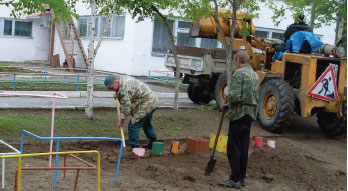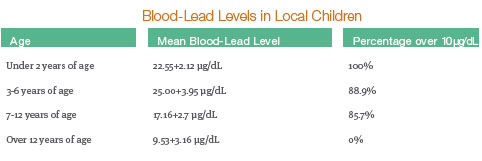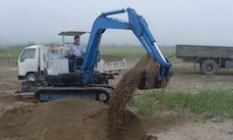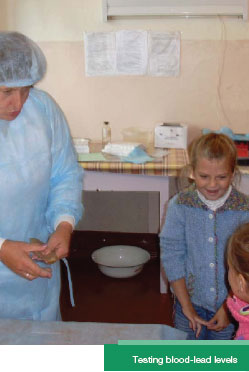Smelter Cleanup
Rudnaya Pristan and Dalnegorsk
People in the Rudnaya River Valley, Russia, experience alarmingly high rates of cancer and other acute, chronic conditions as a result of several different types of industrial pollution. Outdated mining techniques have resulted in cadmium, zinc, lead, boron, and sulfur contaminating the entire city of Dalnegorsk, affecting the air, soil, water, homes, and crops. Neighboring Dalnegorsk is the second largest city in the region, Rudnaya Pristan, which is built around a lead smelting facility and a seaport, and is also among the most lead-contaminated sites in Russia. Citizens of Rudnaya Pristan have high rates of acute respiratory diseases and neurological damage.
Zinc and lead ores were mined in Dalnegorsk and transported in open cars to Rudnaya Pristan for smelting, a practice that ended only four years ago. The areas between the two towns, as well as the towns themselves, have been literally dusted with lead and cadmium, two of the most potent naturally occurring neurotoxins, for nearly 100 years. The heavy metal pollution has contaminated most of the Rudnaya River Valley. Approximately 50% of children randomly tested in this region showed abnormally high blood-lead levels despite the discontinuation of lead smelting in the area.

Project Strategies
The success of this project hinged on a collective effort to both assess the sources of continuing contamination and to promote outreach and educational efforts regarding the hazards of lead poisoning and heavy metal pollution. Success was measured in terms of stopping the continued elevation of children’s blood-lead levels, with an eye toward lowering the average level of exposure as much as possible.
Efforts to curb continued lead poisoning involved the identification and cleanup of the most heavily frequented children’s play areas. The lead and cadmium-contaminated areas were mapped along the entire valley, allowing the local partners and Blacksmith Institute to make targeted and pertinent recommendations to the residents of the Rudnaya Valley along with more concerted efforts toward remediation.
Following the successful identification of the major problem areas, local partners were able to remove and safely dispose of 2,000 to 3,000 cubic meters of contaminated soil from six heavily trafficked kindergartens (three sites in Dalnegorsk, two in Rudnaya Pristan, and one site in Serzhantovo) and one summer camp, Camp Chaika.
Following the physical removal of the contaminants from children’s spaces, the next step was careful medical assessment and monitoring. Blood-lead tests were administered throughout the area to quantify the extent of the contamination and identify the most significantly affected areas. 120 families with children with severely elevated blood-lead levels were presented with literature on how to reduce the negative impact of heavy metal exposure. They were also provided with food additives to facilitate the removal of heavy metals from their systems.

While the most aggressive and hands-on care was given only to the most significantly affected children and their families, over 5,000 families were given pamphlets educating parents on how to limit exposure to lead and other heavy metals. Information on the hazards of heavy metal poisoning was also disseminated through mass media outlets, and in popular children’s books.

Outcomes and Follow-Up
The results of these efforts have been very promising. Prior to the 2007 heavy metal awareness campaign and reduction of environmental pollutants, 22% of the children of Dalnegorsk and 65% of the children in Rudnaya Pristan had blood-lead levels greater than the acceptable WHO guideline (10 μg/dL). Of those same children, about 2% in Dalnegorsk and 24% in Rudnaya Pristan had very high blood-lead levels (over 20 μg/dL). Just two years later, in 2009, the number of children with lead levels over 10 μg/ dL dropped to 9% in Dalnegorsk, and the number with high lead levels (over 20 μg/dL) dropped to less than 1%. In Rudnaya Pristan, results were not quite as dramatic, likely due to the greater severity of lead contamination in that area. In Rudnaya Pristan, while the overall number of children exhibiting lead levels above 10 μg/dL only dropped to 64%, the number with high levels (over 20 μg/dL) did drop considerably to 14%. Those children who exhibited decreased blood-lead levels did so on an average of nearly 50%.
As promising as these results have been in Dalnegorsk, Rudnaya Pristan still remains heavily affected by lead pollution. Currently, upwards of 50% of their children still have a blood-lead level of over 10 μg/dL, and further remediation is urgently needed.




